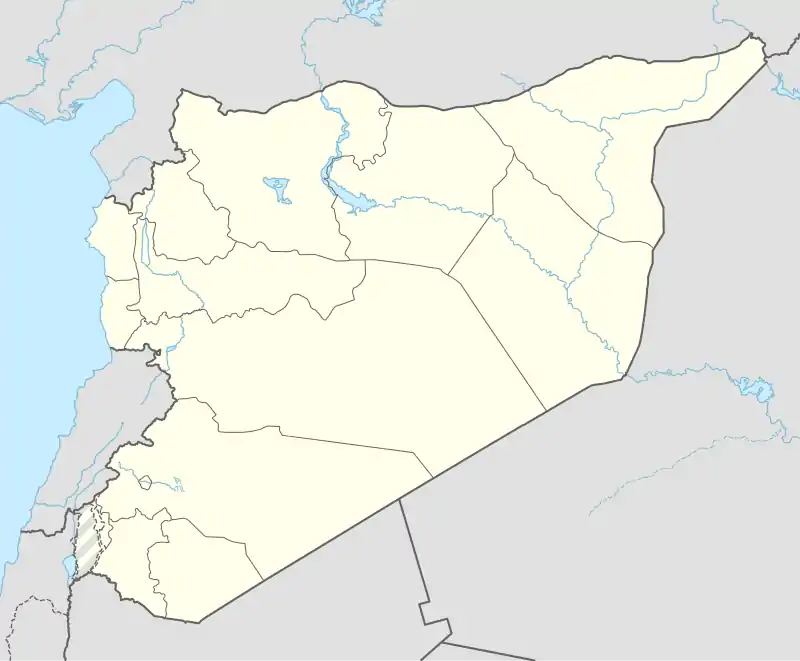Raphanea
Raphanea or Raphaneae (Ancient Greek: Ῥαφάνεια;[1] Arabic: الرفنية, romanized: al-Rafaniyya; colloquial: Rafniye) was a city of the late Roman province of Syria Secunda. Its bishopric was a suffragan of Apamea.
الرفنية | |
 Shown within Syria | |
| Location | Syria |
|---|---|
| Region | Hama Governorate |
| Coordinates | 34°56′31.9″N 36°23′46.6″E |
History
Josephus mentions Raphanea in connection with a stream that flowed only every seventh days (probably an intermittent spring now called Fuwar ed-Deir) and that was viewed by Titus on his way northward from Berytus after the destruction of Jerusalem in AD 70.[2]
Near Emesa, Raphanea was the fortified headquarters of the Legio III Gallica from which was launched the successful bid of 14-year-old Elagabalus to become Roman Emperor in 218.[3]
Raphanea issued coins under Elagabalus,[4] and many of its coins are extant.[5][6][7]
Hierocles[8] and Georgius Cyprius[9] mention Raphanea among the towns of Syria Secunda. The crusaders passed through it at the end of 1099; it was taken by Baldwin I and was given to the Count of Tripoli.[10] It was then known as Rafania.[11]
Episcopal see
The only bishops of Raphanea known are:[11][12]
- Bassianus, present at the Nicaea, 325;
- Gerontius at Philippopolis, 344;
- Basil at Constantinople, 381;
- Lampadius at Chalcedon, 451;
- Zoilus about 518;
- Nonnus, 536.
The see is mentioned as late as the 10th century in the Notitia episcopatuum of Antioch.[11][13]
References
- Emil Schürer (2014). "A History of the Jewish People in the Time of Jesus Christ: Two Divisions in Five Volumes". Aeterna Press.
- Josephus, The War of the Jews or The History of the Destruction of Jerusalem, book 7, chapter 5, 1
- Jasper Burns, Great Women of Imperial Rome (Routledge 2006 ISBN 978-1-13413185-3), p. 209
- Kevin Butcher, Roman Syria and the Near East (Getty Publications 2003 ISBN 978-0-89236715-3), p. 117
- American Numismatic Society: Raphanea
- Elagabalus AE21mm Raphanea in Syria
- Raphanea Genius Coin
- Synecdemus, 712, 8.
- 870 (Heinrich Gelzer, Georgii Cyprii descriptio orbis romani, 44)
- "Historiens des croisades", passim; Rey in "Bulletin de la Société des antiquaires de France", Paris, 1885, 266.
- Sophrone Pétridès, "Rhaphanaea" in Catholic Encyclopedia (New York 1912)
- Le Quien, "Oriens christianus", II, 921.
- Vailhé, "Échos d'Orient", X, 94.
External links
- Brown, J., P. Gatier, R. Warner, R. Talbert, T. Elliott, S. Gillies. "Places: 668350 (Raphaneai)". Pleiades. Retrieved March 8, 2012.CS1 maint: multiple names: authors list (link)
- Raphanea(e) in the Tabula Peutingeriana